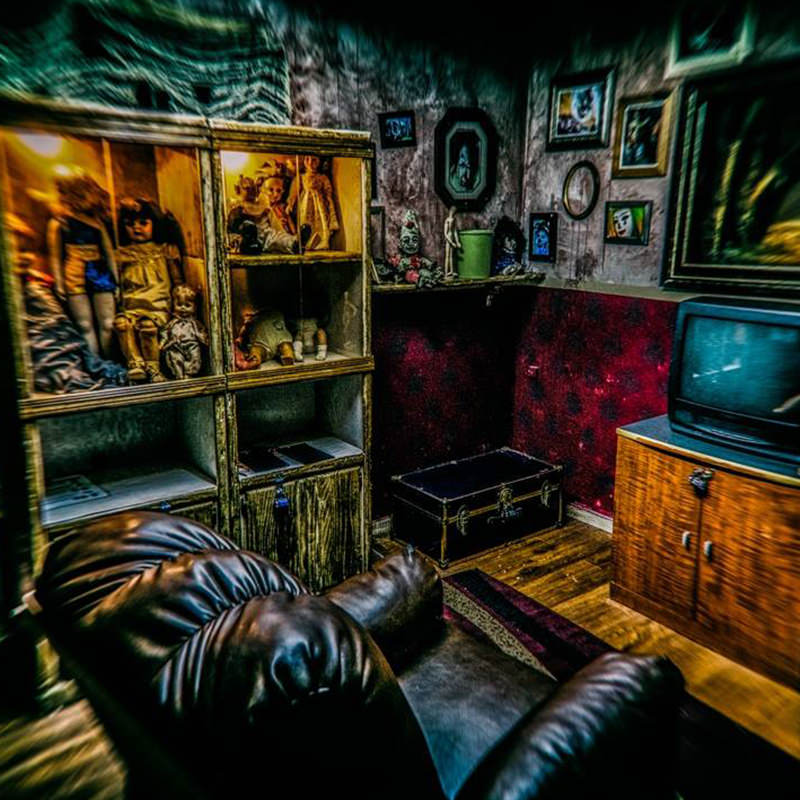Explore Why Escape Rooms Are Enjoyable and Offer an Unique Means to Bond With Buddies and Family
Retreat rooms have arised as a fascinating kind of enjoyment, offering a mix of immersive storytelling and psychological stimulation that is both fulfilling and difficult. What exactly establishes getaway areas apart as a bonding experience?

Immersive Narration
While the idea of retreat rooms might originally seem uncomplicated, it is the immersive storytelling that genuinely establishes them apart. These experiences are carefully created to transfer participants right into another world, weaving engaging stories that captivate and engage. From the moment players enter the room, they are covered in a meticulously crafted atmosphere, complete with complex information, audio effects, and thematic aspects that serve to improve the story.
Each retreat room features a special story, often involving an objective or secret that individuals need to address within an established timeframe. The storyline is not merely a backdrop however is important to the experience, affecting the style of problems and the format of the area. This narrative-driven strategy ensures that every element, from the clues to the decor, contributes to the unfolding story, creating an immersive and cohesive environment.
Additionally, using advanced technology and interactive features further deepens the immersive experience. Electronic interfaces, enhanced reality, and sensory effects can make the tale come alive, permitting individuals to feel as though they are really part of the unraveling dramatization. This immersion promotes a sense of exhilaration and seriousness, raising the overall satisfaction of retreat spaces.
Mental Excitement
Taking part in escape areas uses participants an unique kind of mental excitement that tests cognitive abilities in varied and stimulating ways. These immersive experiences need individuals to address elaborate puzzles, decode codes, and believe seriously under time restrictions. This environment promotes enhanced analytic skills, as individuals must browse a series of complicated challenges that need logical reasoning and imaginative reasoning.
Retreat areas frequently integrate a selection of problem types, from mathematical equations to linguistic riddles and spatial understanding jobs. Addressing a cipher might sharpen analytical skills, while a physical puzzle might improve hand-eye sychronisation and spatial reasoning.
Additionally, the time-sensitive nature of retreat areas includes a component of stress that enhances cognitive performance. Participants are encouraged to think quickly and efficiently, improving their ability to process information and choose rapidly. This increased state of mental activity can lead to increased focus and sharper cognitive capacities, making retreat areas not just an enjoyable diversion however likewise a useful exercise for the brain.
Teamwork and Cooperation
Remarkable Experiences
Commonly, one of the most engaging aspects of escape areas is the creation of memorable experiences that remain long after the game has concluded. The immersive nature of retreat areas, with their intricate puzzles and involving storylines, offers participants with a feeling of accomplishment and friendship that is tough to reproduce in various other social activities. These experiences other end up being treasured memories, usually recounted with interest and nostalgia.
The joint effort required to resolve the challenges cultivates a special sense of unity amongst participants. Pals and relative are provided the possibility to collaborate in a high-pressure, yet fun setting, enhancing bonds and enhancing communication abilities (escape room orlando). The shared victories and also the occasional failings add to a collective feeling of accomplishment and happiness
In addition, the thematic variety of getaway areas ensures that each experience is unique. Whether browsing a haunted mansion or deciphering clues in a spy-themed setting, the variety maintains the exhilaration fresh and the memories dazzling. This selection not just deals with different interests however additionally ensures that each browse through to a retreat space is a special journey.
Fundamentally, retreat spaces supply unforgettable experiences that construct enduring links and supply stories to be cherished for several years to come.
Verdict
Getaway spaces offer an unique avenue for bonding with their immersive storytelling, psychological excitement, and dependence on team effort and teamwork. These elements collectively create a thrilling atmosphere that tests participants, fostering cognitive growth and strengthening partnerships. The adventure of conquering complicated troubles together results in memorable experiences and an extensive sense of achievement. As a result, getaway spaces become a distinct and delightful activity, integrating home entertainment with the development of vital social and cognitive skills.

Building on the structure of team effort and cooperation, the thrill of the obstacle in getaway areas uses individuals an exciting experience that examines their analytic capabilities and mental acuity - orlando escape room.Additionally, the thoroughly crafted intricacy of getaway areas guarantees that no two experiences are alike.Usually, one of the most compelling aspects of retreat spaces is the development of remarkable experiences that remain long after the video game has actually wrapped up.In addition, the thematic diversity of escape areas guarantees that each experience is distinct